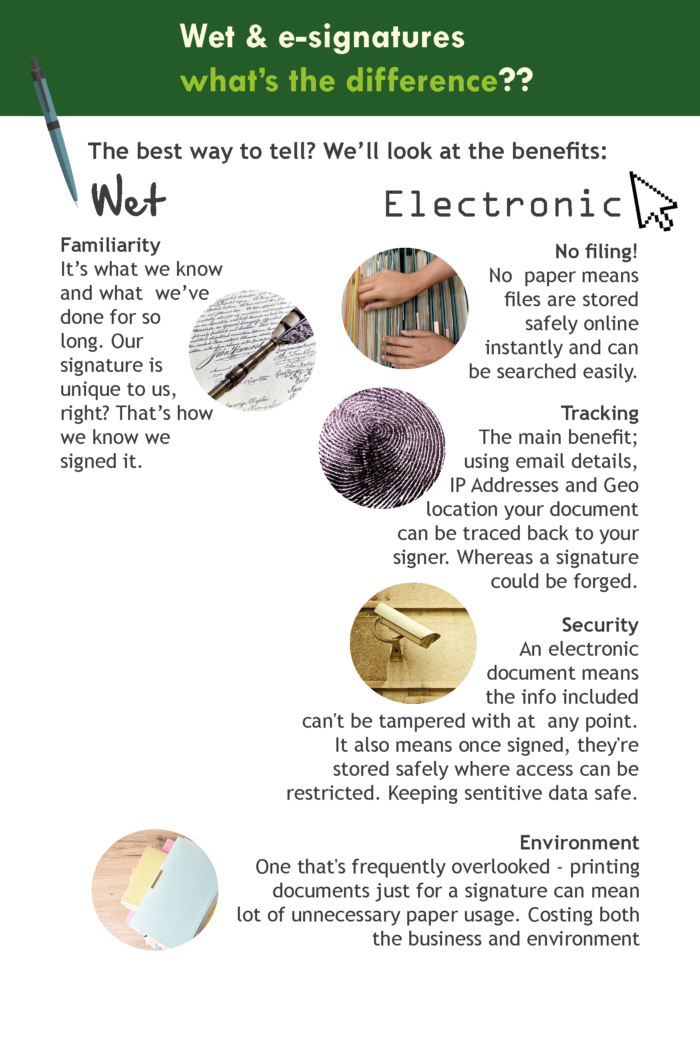
Thanks to these laws and regulations, more companies are adopting electronic signatures to get important documents signed. Other laws that make electronic signatures legally binding include the Electronic Identification and Trust Services Regulation ( eIDAS) in the European Union, the Personal Information Protection and Electronic Documents Act ( PIPEDA) in Canada, and the Electronic Transactions Act ( ETA) in Australia. Both laws grant legal recognition to electronic signatures. In the U.S., Congress passed the Electronic Signatures in Global and National Commerce ( ESIGN) Act into law in 2000, along with the Uniform Electronic Transactions Act ( UETA). Finally, while it may sound old-fashioned, some recipients may insist on using wet signatures when formally endorsing an agreement.Ĭan Electronic Signatures Replace Wet Signatures?Īs more business goes digital, many new laws and regulations give electronic signatures the same legal effect as wet signatures. If you’re unsure whether certain documents require a physical signature, it’s best to seek legal counsel to be on the safe side. Some business documents may also require verified wet signatures, which include:

Other documents that require wet signatures include: may require a wet signature to verify the signer’s identity when drawing up legal documents like promissory notes and deeds of trust. When Do You Need a Wet Signature?Ī Notary Public in the U.S. Potential roadblocks: Getting signatures can present roadblocks for prospects who may not be able to print or mail forms on time.ĭespite these drawbacks, there are some instances when you must obtain wet signatures.Increased risks: Failing to secure paper documents properly can lead to loss, misuse, or even theft of confidential information.Higher costs: Direct costs for collecting signatures include paper, ink, and postage, while indirect costs include lost productivity from processing extra paperwork.Long lead times: Obtaining wet signatures can take days or weeks because you have to print and mail out the documents.

However, there are numerous downsides to collecting handwritten signatures. One example is the Statute of Frauds of 1677, an Act of the English Parliament that required signatures for documents like contracts and wills.Įven today, some documents still require wet signatures. Wet signatures have been used for hundreds of years to form legally binding contracts and prevent fraud. It refers to the fact that “wet” ink needs time to dry, hence the name.

#WET SIGNATURE HOW TO#
How to Create an Electronic Signature Workflow in frevvoĪ wet signature is when you physically sign a paper document with a pen or seal.Why Use Electronic or Digital Signatures Instead of Wet Signatures?.What’s the Difference Between Electronic and Digital Signatures?.Can Electronic Signatures Replace Wet Signatures?.

#WET SIGNATURE SOFTWARE#
We’ll also look at how you can use frevvo’s digital signature software to modernize your signature processes.Ĭlick the links below to navigate to the section you want to learn more about: In this article, we’ll explain what a wet signature is and when you should use it. Obtaining wet signatures can take days or even weeks for paper-based processes, leading to a backlog of work and stalled projects.įortunately, there’s a better way to collect wet signatures. However, as more work takes place outside the office and across the globe, one challenge that companies face is getting documents signed in a timely manner. Most business processes require signatures, whether you’re onboarding a new hire, approving a purchase order, or preparing a sales contract.


 0 kommentar(er)
0 kommentar(er)
